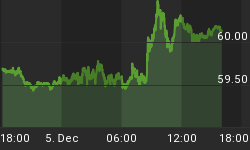ExxonMobil (NYSE:XOM) has made headlines this week, and not only because the world’s largest publicly traded oil and gas company is reporting Q4 figures before the bell on Friday.
In the week in which analysts will closely watch Exxon’s earnings for signs of additional revenue and profit gains thanks to the oil price rally at the end of 2017, the U.S. supermajor made two announcements concerning its plans for investments and production in its domestic market in America.
Exxon plans to invest more than $50 billion over the next five years to expand its business in the United States, with investments enhanced by the U.S. tax overhaul, chairman and CEO Darren Woods said in a blog post on Monday, praising the “tax and regulatory reform’s economic boon.”
Exxon was spending on average $10.5 billion annually in the U.S. before the oil price crash, so this plan — lacking in specifics except for mentioning the Permian — is a return to the pre-2014 levels of capex in the U.S.
On Tuesday, Exxon followed up with plans for its Permian operations, saying that it planned to triple total daily production to more than 600,000 oil-equivalent barrels by 2025, and invest more than $2 billion in transportation infrastructure to support its Permian business, thanks to the U.S. corporate tax rate that creates “an environment for increased future capital investments.”
Related: The Oil Rally Is Helping Renewables
Now analysts and investors will look at what’s in store for Exxon’s earnings due out on February 2 before the opening bell. They will also look for signs that energy stocks — battered for most of last year — may have finally started to catch up with the oil price gains in the fourth quarter of 2017 and so far this year.
For Exxon, the consensus estimate of The Wall Street Journal expects adjusted earnings per share (EPS) of $1.03. In Q4 2016, Exxon’s adjusted EPS of $0.90 beat the consensus estimate of $0.70.
Estimize — which collects estimates from Wall Street analysts, hedge-fund managers, and company executives, among others — expects Exxon’s Q4 adjusted EPS at $1.08, MarketWatch reports.
With the oil price rally of the past months, analysts think that the upstream business will be the main contributor to Exxon’s increased earnings. “We forecast that the company’s average realized oil price increased 20 percent in the fourth quarter,” Muhammed Ghulam, an analyst with Raymond James, told MarketWatch.
According to Jefferies, Exxon will show a strong cash generation momentum, and its stock has more room to grow, after shares of integrated oil and gas companies started to rise in December on the back of the oil price rally. Still, Jefferies is concerned with the high valuation of Exxon’s stock, with price/earnings higher than both the industry average and the S&P 500 average.
At the start of the fourth quarter last year, Goldman Sachs (NYSE:GS) said that shares in oil companies had been underperforming the oil price gains, so oil stocks had room to rise along with oil prices before finally catching up with the rally.
Higher oil prices have also made institutional investors increasingly optimistic about oil stocks, especially European funds, according to HSBC.
Related: Why Natural Gas Prices Just Tanked
“Following a sharp increase in the oil price since mid-2017, international funds in general have increased their holdings in the energy sector,” HSBC strategists told Reuters on Wednesday, adding that investors could even put more weighting on the energy sector, especially in Europe.
In the 12 months to January 31, 2018, the S&P index rose 23.9 percent, while its energy sector ticked up 3.6 percent, and the integrated oil & gas sector was up by 7.5 percent, data collected by Yardeni Research shows.
Year to date, the S&P 500 was up 5.6 percent as of January 31, with the energy sector up 3.8 percent, and integrated oil & gas — up 2.6 percent. Oil and gas drilling has been outperforming both the S&P 500 and the energy sector with an 11.4 percent gain year-to-date.
We are just one month into 2018, but could this year be the year of oil stocks?
By Tsvetana Paraskova for Oilprice.com
More Top Reads From Oilprice.com:

















